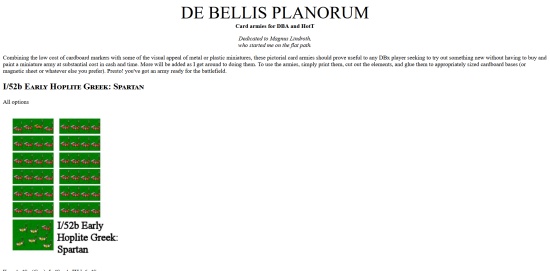Morituri te salutant!
Time for Round Two, and I have chosen the Gladiator. The reasons behind this choice are deeply scientific – the gladiator is why I got into the contest in the first place, and I just couldn't wait to paint it any longer! This means the next step is...
Da Plan
This figure represents a mirmillo (or myrmillon, depending on your source). I can find no fault with Alpha's figure, except that the right foot may be a little on the small side, but I'm not sure. It certainly is not small enough that I feel like sculpting a new foot – I had my fill of sculpting after the eyeball fiasco last time! So this article will be mostly about painting. The plan will be:
- Remove the figure from its molded-on base, so it can sit on a flat "arena" base
- Use the Tamiya Smoke technique on the exposed steel (per my German Leader entry).
- Experiment with very dark African flesh. I've experimented with mid-tone flesh before, but never the really deep ebony where the shadows almost look blue.
- Modify the helmet to add feathers – most of the drawings of mirmillo I've seen have them.
- Use an airbrush to give a dust coating on the lower legs and the shield, to give that "in-use look."
My primary source for this paint job will be Gladiators and Caesars, ISBN 0-520-22798-0, copyright 2000, available from the University of California Press. A GM at Historicon recommended it to me. I've highly enjoyed it, so I'm recommending it to you.
I'm also going to experiment with the flow of the article. I'm going to swap photos around to give steps for each figure feature, rather than a strict chronological narrative. So you may see something painted in a picture, and then unpainted again later. No reason you need to suffer with my herky-jerky painting order!
As before, all paints are Delta Ceramcoat, except metallics which are Vallejo.
The Base First
On a whim, I started with the base. I've been using Battletech hex bases for my 28mm gladiators and have gotten used to the thick look. I picked up a pack of steel 2" hexes and a pack of Masonite 2" hexes from Renaissance Ink - Masonite for thickness, the steel for my magnetic storage.

I liberally applied 5-minute epoxy and clamped the two bases together (Photo 1A). To give the base a smooth edge, Apoxie Sculpt putty was mixed and applied to the base sides and smoothed with a wet finger. After the putty was hard, a variety of emery boards were used to get the final smoothness (Photo 1B).
To add texture, a coat of white glue (or PVA if that's your leaning) was put on the top surface of the hex, and very fine beach sand was sprinkled on top. To add a little life, a faux foot – well, more of a peanut – was cut in a piece of balsa wood. It was used to imprint some footprints in the sand. A few were given a slight sliding motion to add to the realism.
A dental tool was also used to add a few slashes – from weapons, shields, whatever (Photo 1C). After the white glue dried, a mix of white glue and water was washed on top to seal in the sand.

The base is given a base coat of Mocha. This was followed by a drybrush of Mocha and Antique White in 2:1 ratio. To deepen the shadows, a wash of Renaissance Ink Brown Ink with Magic Wash (see formula here) 1:5 was applied. The Mocha:Antique White drybrush was repeated, and the hex edges were painted with the 2:3 ratio. A final drybrush was lightly applied to the sand with a ratio.









